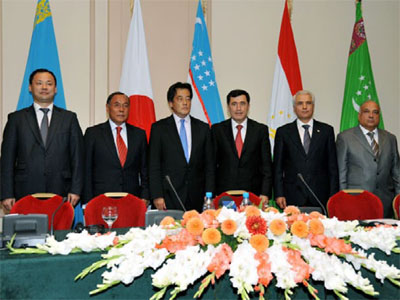
Japan Increases Involvement in Central Asia
Publication: Eurasia Daily Monitor Volume: 18 Issue: 139
By:

Almost two decades ago, Japan adopted the 5+1 approach to dealing with Central Asia, a model other outside players have copied. Now, Japan is increasing its involvement in the region given the Taliban’s recent victory, which has created new diplomatic opportunities but also uncertainties for many major powers. Japan is the third-largest economy in the world and is committed to dealing with other countries primarily in terms of economic development rather than geopolitics and in terms of regions rather than simply in bilateral terms. Given these factors, Tokyo’s presence in Central Asian capitals individually and Central Asia as a region is likely to expand, making it a far larger player in the future than it has been up to now.
In 2004, Japan reached an agreement with the five countries of Central Asia on what all sides called a “5+1” basis. On the one hand, that arrangement prevented any suggestion that Tokyo would play one regional player off against another—something other outside powers have done. And on the other hand, it has ensured that Japan could focus most of its time on economic projects instead of geopolitical ones, allowing all five Central Asian countries to benefit from this Japanese involvement, rather than excluding one or more because of political differences. And importantly, this agreement has enabled Turkmenistan, which often stands apart from the other four because it wants to maintain its neutrality, to be a full participant (see EDM, November 26, 2012; CAA Network, March 14).
Over the last 16 years, Japan and the regional republics have held 38 meetings within the 5+1 format: 7 at the ministerial level, 14 at the deputy ministerial level, and 17 at the experts’ level. Significantly, every one of these meetings has been attended by representatives of all six participating countries. In addition, there have been a growing number of bilateral meetings between Japanese officials and the governments of the Central Asian quintet. These meetings have been more successful than many perhaps expected, for three reasons. First, the Japanese have focused on economic issues and done their homework. They have brought their development officials and experts to each meeting, and they have used the large number of Japanese officials in international financial institutions to multiply their impact. Second, they have steered clear of the political issues that have been divisive and deleterious to the success of other countries’ “5+1” initiatives. And third, the Japanese have presented themselves as fellow Asiatics rather than as part of the West, and they have avoided appearing as immediately and overwhelmingly large as China so as to not be seen as a threat (Ia-centr.ru, September 12).
By operating under the political radar as it were, Japan has seen its bilateral trade with these countries go up dramatically and its influence on the five rise as well. Because of its approach, Japan, according to Russian expert Denis Borisov, a professor at Novosibirsk State University of Economics and Management, is perhaps better positioned to take advantage of the uncertainties in Central Asian capitals in the wake of the Taliban victory in Afghanistan. Tokyo is certainly making an effort in that direction, he suggests. Indeed, he argues Afghanistan’s regime change may give Tokyo new advantages by forming a new, third leg to its approach to the region—one that had been based primarily on economics and support for the idea of Central Asia as a comprehensive region, but now could acquire greater “soft power” by allowing Tokyo to present itself as an honest broker uninterested in extending its power there (Ia-centr.ru, September 12).
That Japan is certainly thinking about expanding its influence in Central Asia is suggested by Masato Toriya, a specialist on the region at Tokyo’s Foreign Language University. He says that the situation in Afghanistan may rapidly descend again into civil war, with negative consequences for the countries of Central Asia and the world. Masato contends that the best means to prevent civil conflict would involve a united front in Central Asia with the joint efforts of the United States, the European Union, Russia and Japan, elevating Tokyo to a position in South Asia which it has never held before (Sputnik News, September 14).
Tokyo may not actually aspire to such a role; still, meetings, agreements and discussions among Japanese and Central Asian officials in the past two weeks indicate that it will adopt a much more active role in Central Asia than ever before. For example, there have been discussions of Japanese involvement in the construction of a nuclear power plant in Kazakhstan (Zona.kz, September 13), Japanese participation in the construction of a hydro-electric dam in Turkmenistan (SNG.fm, September 6), expanded trade with Uzbekistan and the region as a whole (Regnum, August 30) and promotion of the idea that the 5+1 approach Tokyo uses should be the model for relations with outside powers (Halva.tj, September 6).
This last point is especially important because it provides an opportunity to include Turkmenistan in a grouping it has often avoided. Thus, what Japan began in 2004 may be extended in unusual ways by other powers who hope to rope in Ashgabat but have had little luck so far. If that is the case, then Japan as both a model and an actor will have assumed a much larger role in the future of Central Asia than anyone is now contemplating (Mift.uz, August 28; SNG.fm, SNG Today, August 30).



